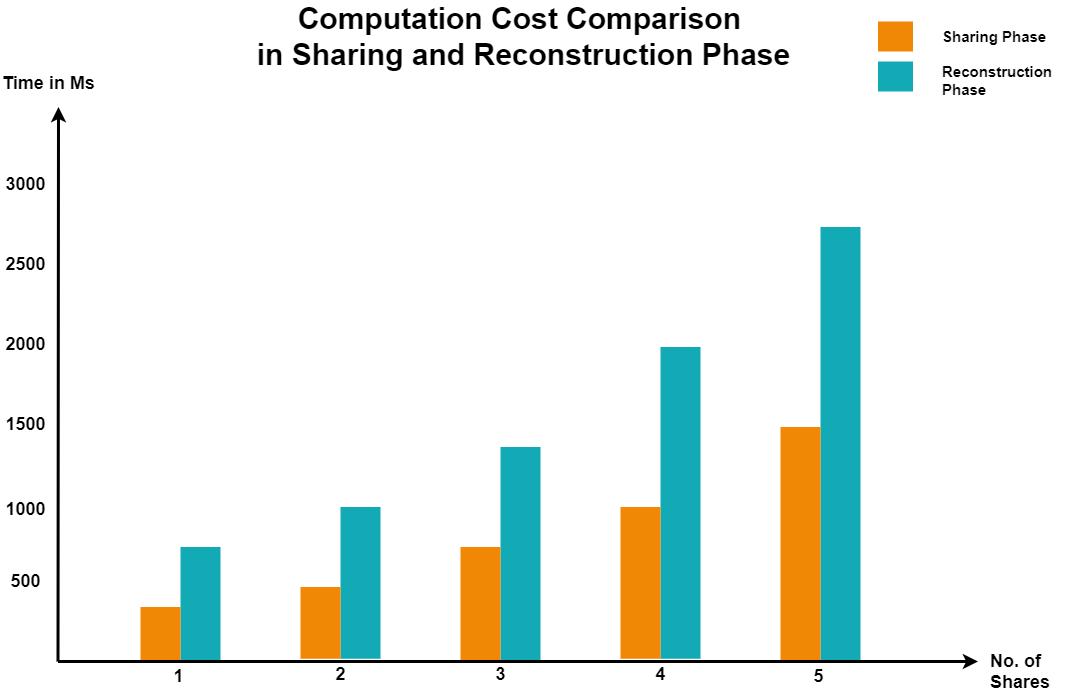e-ISSN: 2582-5208 International Research Journal of Modernization in Engineering Technology and Science Volume:02/Issue:08/August -2020
Impact Factor- 5.354
www.irjmets.com
A SECURE AND LOSSLESS (k, n) SECRET IMAGE SHARING USING SHARING MATRIX SCHEME Shubham B. Bhokare*1, Prof. Archana S, Vaidya*2 *1Department
of Computer Engineering G.E.S. R.H. Sapat College of Engineering, Nashik, MH, India
*2Department
of Computer Engineering G.E.S. R.H. Sapat College of Engineering, Nashik MH, India
ABSTRACT The majority of generated information includes images as they are widely used in the industrial process, businesses, military, scientific and researches. Information security has become a serious issue as a huge amount of information is exchanged via the internet. It needs to protect the confidential data in the image from unauthorized access or intruders. Advancement in hacking techniques has failed traditional image encryption approaches. Image encryption is applied to increase its security when used over the internet and to protect an image from unauthorized access. Nowadays the Internet is being used by everyone for sharing, transferring and storing huge amounts of data. The Internet has many drawbacks and there exist possibilities of hacking or being attacked by intruders. Hence, we are introducing a algorithm - (k, n) Sharing Matrix Generation. The sharing matrix is reliable when images are being shared over the internet. The sharing matrix generation algorithm is then used with image hiding using Steganography and Image Encryption. Further, we are combining image encryption and sharing matrix that will allow the sharing of secret images in a secure and lossless manner. Keywords: Image Encryption, Secret Image Sharing, Sharing Matrix, Visual Cryptography
I.
INTRODUCTION
The information generated from devices over rapidly growing internet needs to be secured. Most often cryptography is used to secure information. Original readable information is encrypted and converted into ciphertext and then decrypted to retrieve original information in a readable format. With rapid development in technology, intruders or hackers can find a way to access or modify confidential data. So this information, when shared over a network, must be protected by applying security techniques like cryptography. Cryptography provides Authentication, Confidentiality, and Integrity to the information when shared. The secret is encryption into n shares in a method proposed by Naor at al. [1] in visual cryptography (VC) These n shares are then distributed to every participant in the system. Any participant in the system can have either one or more share(s). To retrieve this original secret image, all the participants must gather n shares in the (n, n) VC Technique. Different algorithms are used to hide the visual information in VC Encryption. The decryption process is done by the human visual system. Encryption inserts some noise data in the original image and during decryption noise data is either reduced or removed to regenerate that original image. One of the alternatives to this is Secret Image Sharing Schemes (SISS) The SISS scheme converts a secret image into n shadows or shares which can be later shared. Then original secret image can be regenerated only from any k shares/shadows (k
II.
LITERATURE SURVEY
Secret image sharing has attracted significant consideration in recent years. At first, Visual Cryptography methods were proposed by Naor et al. [1] The secret image in VC is encrypted into n shares/shadows. These n shares are allocated to each participant. They can have either one or more shares. All the participants in the system have to combine n shares in (n, n) VC scheme to regenerate the original image. The Encryption process hides visual data and the decryption is performed by human vision. Encryption process inserts some noise data in the original image so as to hide the information and while decryption, the noise data is reduced or removed to regenerate original information. In VC, • • • • •
Every share is transparent, independent and noise-like. It supports only binary images. Attackers can identify and modify image shares as they are noisy in nature. Reconstructed image is always of low quality. Large transmission and storage costs is required.
www.irjmets.com
@International Research Journal of Modernization in Engineering, Technology and Science
[503]



